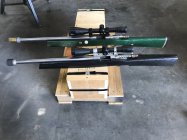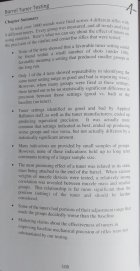As Boyd Allen, Dusty, and quite a few other members of this sight can attest, I am one of the shooters that was on the front lines during the battle to get Tuners allowed in NBRSA Bag Gun classes.
I had developed my own one piece tuner, (to be used in the two 10.5 weight limit classes, Sporter and Light Varmint). The late Gene Bukys had visited Dywight Scott and brought back to Houston a different design.
It took quite a bit of persuading, but at the National Meeting the BOD voted to allow tuners on a one year provision basis. At the membership meeting, the discussion was a tad heated, one very well known member of the Benchrest community even took the microphone and said, “Jackie, most of the people here wish you would just go away.”.
The membership did vote for the one year provisional, and the next year tuners were allowed.
The rules governing them is in our Rule Book.
I then developed my own ”dampening tuner”. I believe it broadens the competitive load window. Gene started making his own tuner with a dampener soon after.
Through the years, what have I learned? First, you can’t make a mediocre barrel shoot like a great barrel with a tuner. All it does is offer another tuning aid, (in the case of a tuner, instant), in our never ending quest to get as much out of a barrel the it was born with.
Like Gene, I try to avoid moving the tuner once I find the node that the barrel likes. In Short Range Benchrest, the overall load has to be pretty close. You just can’t toss 30.0 grns of 133 in a 6PPC and expect to get it shooting at a sub .200 level of accuracy by turning the tuner. Anybody that shoots Short Range knows that there is a heck of a lot more involved in finding a competitive tune than simple barrel harmonics.
But once you find that tune, and the tuner setting that the barrel likes, you can tweak things between relays to (hopefully), keep the combination competitive.
Of course, in shooting Disciplines where there is no on site loading between relays, the tuner might be used with a different purpose.
Here are my LV 6PPC and my 30BR VFS rifle with their respective tuners.














